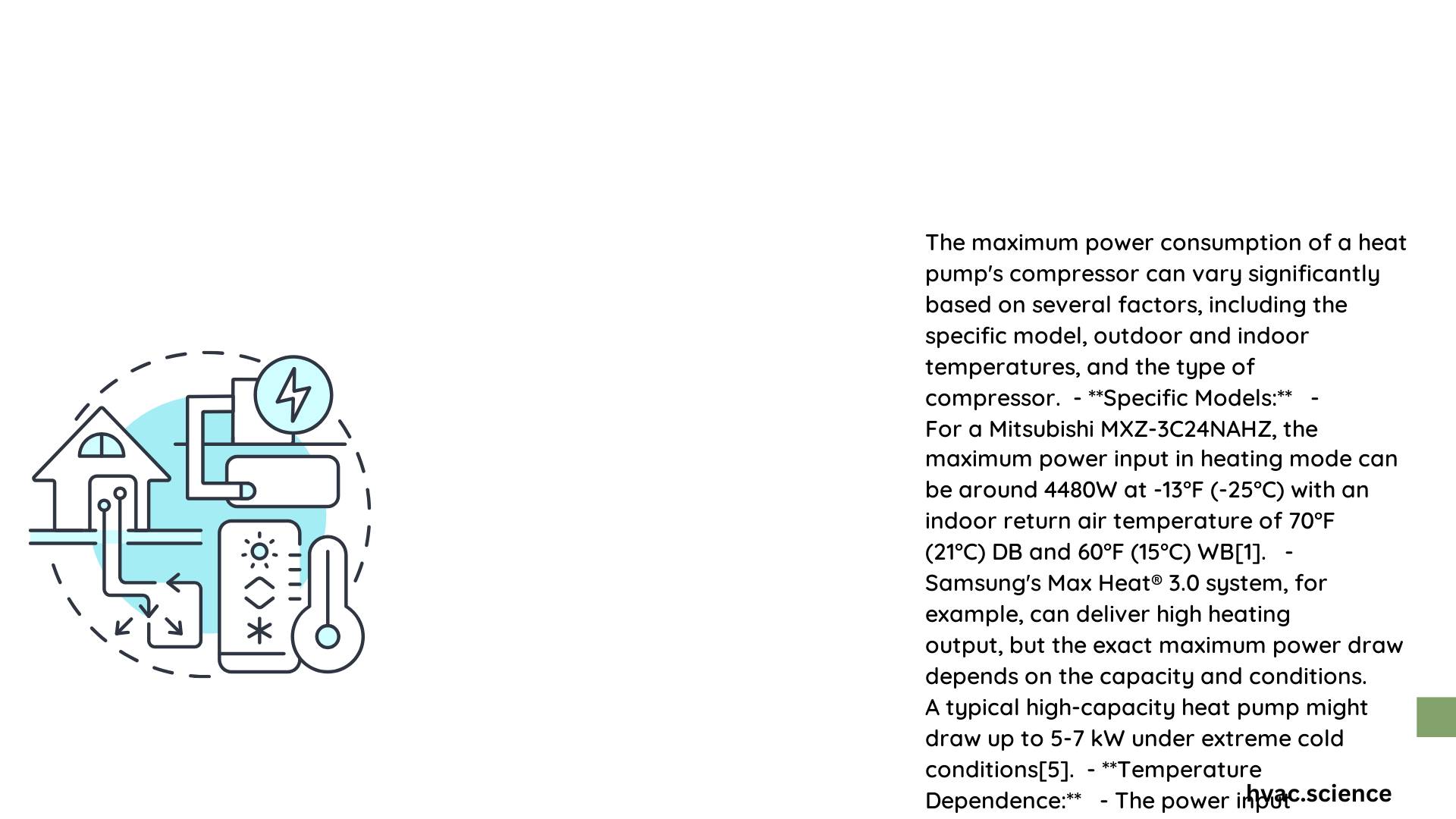Heat pump max power compressors represent sophisticated thermal engineering solutions that transform electrical energy into precise heating and cooling capabilities. These advanced mechanical systems leverage complex thermodynamic principles to transfer thermal energy efficiently across varying environmental conditions, enabling remarkable performance across residential and commercial applications. Understanding their technical specifications, operational parameters, and efficiency metrics is crucial for designing high-performance climate control systems.
What Determines Heat Pump Compressor Maximum Power?
Fundamental Compressor Performance Characteristics
Heat pump compressors’ maximum power is influenced by multiple interconnected factors:
- Capacity Specifications
- Cooling rated capacity
- Heating rated capacity
-
Temperature range performance
-
Electrical Parameters
- Operating voltage
- Current draw
-
Power consumption
-
Efficiency Metrics
- SEER (Seasonal Energy Efficiency Ratio)
- EER (Energy Efficiency Ratio)
- HSPF (Heating Seasonal Performance Factor)
Comparative Analysis of Compressor Power Systems
Performance Metrics Comparison Table
| System Model | Cooling Capacity (Btu/h) | Heating Capacity (Btu/h) | Operating Voltage | Efficiency Ratings |
|---|---|---|---|---|
| 38MURA | Up to 55,000 | Up to 59,000 | 230V | SEER2: 15.0-18.0 |
| LIVV09HP230V1A | 9,100 | 9,500 | 230V | SEER: 17 |
| Copeland Scroll ZW | Variable | Variable | 220V/380V | Dependent on Model |
How Do Ambient Temperatures Impact Compressor Performance?

Compressor performance dramatically shifts with environmental temperature variations. Key observations include:
- Low-Temperature Performance
- 38MURA system maintains heating capacity at 5°F
- Operational range typically between -4°F to 115°F
-
Capacity reduction correlates with temperature drop
-
High-Temperature Performance
- Cooling efficiency peaks around 95°F
- System design mitigates performance degradation
What Technical Factors Influence Maximum Power Output?
Critical factors determining heat pump max power compressor performance:
- Refrigerant Characteristics
- R22 and R407C refrigerant compatibility
- Thermodynamic properties
-
Phase transition efficiency
-
Mechanical Design
- Scroll compressor technology
- Precision engineering
-
Material selection
-
Electrical System Integration
- Voltage stability
- Current management
- Power factor optimization
What Are the Energy Efficiency Implications?
Efficiency metrics reveal critical insights:
- SEER ratings between 15-18 indicate superior energy conversion
- HSPF values around 9 demonstrate consistent heating performance
- EER ranges from 8.2 to 12.4 showcase thermal transfer effectiveness
Practical Considerations for System Selection
When evaluating heat pump max power compressors, professionals should consider:
- Specific application requirements
- Geographic climate conditions
- Long-term energy cost projections
- System compatibility
Technological Advancements and Future Trends
Emerging developments in heat pump compressor technology include:
- Enhanced refrigerant alternatives
- Improved scroll compressor designs
- Smart control integration
- Higher efficiency semiconductor components
Conclusion
Heat pump max power compressors represent a sophisticated intersection of mechanical engineering, thermodynamics, and electrical systems. Continuous technological advancements promise increasingly efficient, adaptable thermal management solutions.
